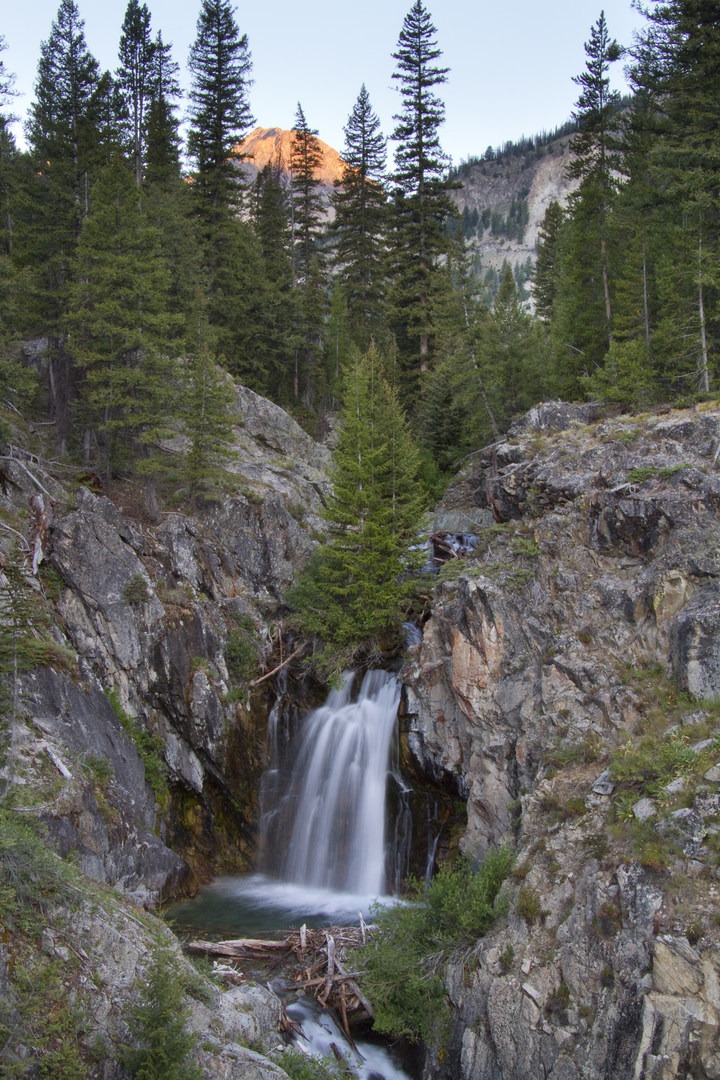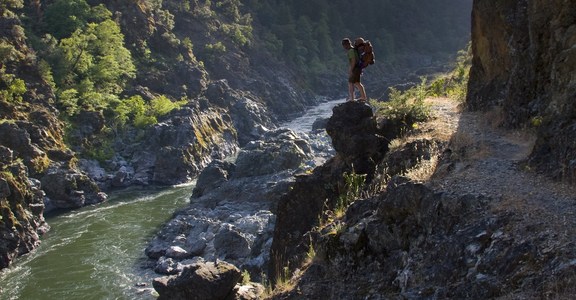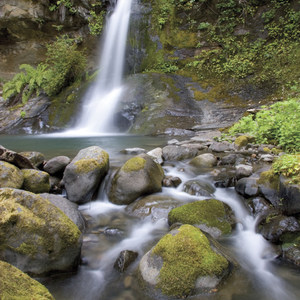North Fork of the Big Wood Overview
The North Fork of the Big Wood drainage is the hiking epicenter of the Boulder Mountains. The main canyon accesses two large tributaries, the West Fork of the North Fork (WFNF) and the East Fork of the North Fork (EFNF). The hikes ascend dramatic, steep-walled canyons, that access multiple alpine cirques ringed by the highest peaks in the range.
The underlying geology of the North Fork of the Big Wood River is a combination of sedimentary and volcanic rock. Neither is particularly durable and both rock units tend to break apart. A wide variety of individual rock units provide a wash of reddish and brown hues that blend together in large, sweeping faces of talus and scree in the upper elevations. Below treeline much of the underlying rocks are covered with forests and soil, but canyon walls are consistently steep down to the valley floor.
West Fork of the North Fork of the Big Wood River
The West Fork Trail is a favorite in the area. The creek crossing near the trailhead can be intimidating and dangerous during spring and early summer. After a mellow mile through the shaded forest, the trail passes by two beautiful waterfalls before emerging into an open section of canyon.
Though the falls are not directly visible from the trail, a bit of scrambling will provide hikers with some nice views. The open, grassy meadows above the second falls are kept clear of trees by massive avalanche paths that sweep both sides of the canyon. In mid-summer an assortment of wildflowers decorate these meadows.
A third waterfall can be heard as the trail climbs steeply through another forested section before emerging into the headwaters basin. The canyon opens around 9,000 feet at the confluence of several alpine basins draining the headwaters of the WFNF canyon. The trail fades in the upper basin a few hundred feet above, but an amazing display of August wildflowers along the creek and a fourth waterfall entices hikers higher into the basin.
Additional Adventures
The West Fork provides the access to Window Lake, several 10,000 and 11,000-foot peaks, and can be connected over a divide with the North Fork of the Big Wood to create a long and dramatic 11-mile loop.
Off-Trail Hiking
From about 8,600 feet any further exploration up the WFNF is via off-trail hiking. The landscape is relatively open so navigation is straightforward if steep. The route to the divide with the North Fork of the Big Wood climbs up frustratingly loose scree and talus slopes. Another destination is the southeast ridge of Peak 11,298, which is a Class 2 and Class 3 scramble up a loose and broken ridgeline and offers outstanding views in all directions across the high peaks of the Boulder Mountains.
Reference: All content excerpted from Exploring Sun Valley - A Comprehensive Guide to the Boulder, Pioneer, and Smoky Mountains by Idaho River Publications.
Logistics + Planning
Current Weather: Powered by Dark Sky







Preferable season(s)
Congestion
Parking Pass
Pros
Cons
Trailhead Elevation
Features
Suitable for
Our mission is to inspire adventure with beautiful, comprehensive and waterproof map-based guidebooks. Owner, publisher, and photographer Matt Leidecker, grew up exploring and guiding on the rivers in central Idaho. His award winning Middle Fork of the Salmon River – A Comprehensive Guide is the standard by which other river guidebooks are measured. Printed on virtually indestructible YUPO paper, IRP guides are truly unique all-in-one resources for adventure. Each book is loaded with full-color maps, stunning photographs, and information on the history, geology, and wildflowers. Visit Idaho River Publications to explore our guidebooks to the Rogue River in Oregon and the mountains of Central Idaho.


















Comments
Sign In and share them.